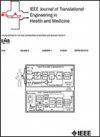Precision Oral Medicine: A DPR Segmentation and Transfer Learning Approach for Detecting Third Molar Compress Inferior Alveolar Nerve
IF 4.4
3区 医学
Q2 ENGINEERING, BIOMEDICAL
IEEE Journal of Translational Engineering in Health and Medicine-Jtehm
Pub Date : 2025-03-12
DOI:10.1109/JTEHM.2025.3568922
引用次数: 0
Abstract
Extraction of the third molar of the mandible is one of the most common oral surgical procedures. Preoperative monitoring and assessment are crucial to mitigate neurological risks. Identifying whether the third molar in the mandible compresses the inferior alveolar nerve still relies on dental professionals, a task that is repetitive and time-consuming. Thus, the primary objective is to utilize dental panoramic radiography for image processing and classify whether the third molar compresses the inferior alveolar nerve, aiming to reduce the demand for CT images in symptom diagnosis and mitigate the risks associated with high-dose radiation. This study proposes an innovative dental panoramic radiography segmentation technique to locate the third molar position. Subsequently, an innovative edge masking enhancement method is used to extract features of the inferior alveolar nerve and the third molar. Moreover, a transformer-based image detection model to consider whether the third molar compresses the inferior alveolar nerve. The third molar position localization method achieved an accuracy rate of 97.92%, compared to recent research at least improved by 3.6% accuracy. Subsequently, innovative edge masking and image enhancement methods improve classification accuracy by 4.3%, when supplemented with computed tomography scan images for further evaluation, the maximum accuracy reached 98.45%, representing a 4.5% improvement compared to previous studies. The third molar position detection results will impact the identification of the inferior alveolar nerve compressed by the third molar. Through the innovative edge region segmentation algorithm can effectively distinguish this object, and the overall evaluation accuracy can be improved by approximately 3.8%.精准口腔医学:第三磨牙压迫下牙槽神经检测的DPR分割和迁移学习方法
下颌第三磨牙的拔除是最常见的口腔外科手术之一。术前监测和评估对于减轻神经系统风险至关重要。确定下颌骨第三磨牙是否压迫下牙槽神经仍然依赖于牙科专业人员,这是一项重复且耗时的任务。因此,本研究的主要目的是利用牙科全景x线摄影进行图像处理,判断第三磨牙是否压迫下牙槽神经,以减少症状诊断对CT图像的需求,降低高剂量辐射的风险。本研究提出一种创新的牙科全景x线摄影分割技术来定位第三磨牙的位置。随后,采用一种创新的边缘掩盖增强方法提取下牙槽神经和第三磨牙的特征。此外,基于变压器的图像检测模型来考虑第三磨牙是否压迫下牙槽神经。第三磨牙定位方法的定位准确率为97.92%,较目前研究至少提高了3.6%。随后,创新的边缘掩蔽和图像增强方法将分类准确率提高了4.3%,当补充计算机断层扫描图像进行进一步评估时,最高准确率达到98.45%,比以往的研究提高了4.5%。第三磨牙位置的检测结果会影响第三磨牙压迫下牙槽神经的识别。通过创新的边缘区域分割算法可以有效区分该目标,整体评价精度可提高约3.8%。
本文章由计算机程序翻译,如有差异,请以英文原文为准。
求助全文
约1分钟内获得全文
求助全文
来源期刊

IEEE Journal of Translational Engineering in Health and Medicine-Jtehm
Engineering-Biomedical Engineering
CiteScore
7.40
自引率
2.90%
发文量
65
审稿时长
27 weeks
期刊介绍:
The IEEE Journal of Translational Engineering in Health and Medicine is an open access product that bridges the engineering and clinical worlds, focusing on detailed descriptions of advanced technical solutions to a clinical need along with clinical results and healthcare relevance. The journal provides a platform for state-of-the-art technology directions in the interdisciplinary field of biomedical engineering, embracing engineering, life sciences and medicine. A unique aspect of the journal is its ability to foster a collaboration between physicians and engineers for presenting broad and compelling real world technological and engineering solutions that can be implemented in the interest of improving quality of patient care and treatment outcomes, thereby reducing costs and improving efficiency. The journal provides an active forum for clinical research and relevant state-of the-art technology for members of all the IEEE societies that have an interest in biomedical engineering as well as reaching out directly to physicians and the medical community through the American Medical Association (AMA) and other clinical societies. The scope of the journal includes, but is not limited, to topics on: Medical devices, healthcare delivery systems, global healthcare initiatives, and ICT based services; Technological relevance to healthcare cost reduction; Technology affecting healthcare management, decision-making, and policy; Advanced technical work that is applied to solving specific clinical needs.
 求助内容:
求助内容: 应助结果提醒方式:
应助结果提醒方式:


